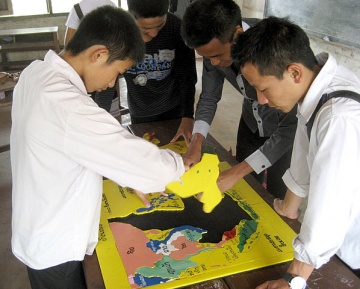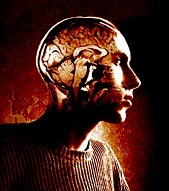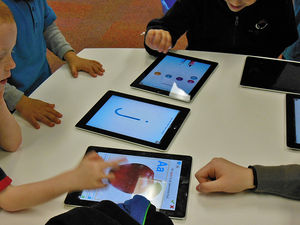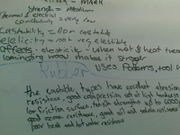GDTE Development/Learner Centred Learning
GDTE microcourse: Learner Centred Learning
Contents
- 1 Planning
- 2 Course materials
- 3 Session 1: Orientation
- 4 Session 2: What is Learner Centred Learning?
- 5 Objectives
- 6 Video signpost
- 7 Introduction
- 8 Question
- 9 Question
- 10 Deep, Surface and Strategic Learning
- 11 Comparing Teacher-Centred and Learner-Centred Learning Approaches
- 12 Reflection
- 13 E-Activity
- 14 Summary
- 15 Session 3: Knowing the learner - cultural orientation
- 16 Objectives
- 17 Video signpost
- 18 Introduction
- 19 Scenario: meet the learners
- 20 Cultural diversity
- 21 Scenario: cultural background
- 22 Maori and Pasifika learners
- 23 Activity
- 24 Activity
- 25 E-Activity
- 26 Summary
- 27 Session 4: Knowing the learner - learning preferences and prior learning
- 28 Objectives
- 29 Video signpost
- 30 Introduction
- 31 Learning Preferences
- 32 Scenario: learning preferences
- 33 Activity
- 34 Prior learning
- 35 Scenario: prior learning
- 36 E-Activity
- 37 Summary
- 38 Session 5: Knowing the learner - numeracy, literacy and digital skills
- 39 Objectives
- 40 Video signpost
- 41 Introduction
- 42 Literacy and numeracy needs
- 43 Scenario: literacy, numeracy and digital skills
- 44 Meeting learner needs
- 45 Reflection
- 46 Reflection
- 47 E-Activity
- 48 Summary
Planning
Design and development team
- Primary author:
- Editorial and learning design review:
- Open peer review from OERu partner institutions.
Course description
Course metrics:
- Notional learning hours: 40 hours
- Duration: 4 weeks, 10 hours per week including assessment
- Assessment: 10 hours
- Formal credit option: Yes
- Course: One micro course from the Learning and Teaching in Practice
- Credential: Graduate Diploma in Tertiary Education
- Level: 3rd year Bachelor Degree
What's it about?:
What will I learn?:
What's involved?:
What prerequisites should I have, if any?:
Design blueprint
Metadata
Intended target audience
Prerequisite knowledge
Course aims
Outcomes
Development and delivery approach
Assessment strategy
Interaction strategies
Project schedule
Course materials
Learning outcome: At the successful complete of this course, students will be able to:
recognise, value and utilise students’ cultural orientation, prior learning, learning preferences/styles, numeracy and literacy needs, by providing a diverse range of activities and opportunities to encourage deep learning
| Session | Learning pathway | E-Activities Focus | Comments and existing content links |
|---|---|---|---|
| Orientation | generic to all micro courses(about doing a micro course) | add Comments | |
| What is Learner Centred Learning? | explore the difference between learner-centred and teacher-centred learning considering examples of teaching approaches from own work context. | LCL, Learning | |
| Knowing the learner - cultural orientation | each E-activity provides example of relevant activity/opportunity to encourage deep learning in context of cultural orientation | Knowing the Learner , diversity, Maori & Pasifika learners | |
| Knowing the learner - learning preferences and prior learning | each E-activity provides example of relevant activity/opportunity to encourage deep learning in context of learning preferences and prior learning | learning prefs Learning styles Prior learning, valuing experience & learning | |
| Knowing the learner - numeracy, literacy and digital skills | each E-activity provides example of relevant activity/opportunity to encourage deep learning in context of numeracy, literacy and digital skills | Literacy & Numeracy, digital skills (from Practice Context, also link to Digital citizenship from PC) Embedding Literacy & Numeracy Course |
Assessment
Demonstrate, using examples from practice, how you:
- provide a diverse range of activities and opportunities to encourage deep learning that shows your ability to recognise, value and utilise students’ cultural orientation, prior learning, learning preferences/styles, and numeracy and literacy needs.
In compiling your evidence to demonstrate the learning outcome identified above include a narrative that:
- explores what you have learned and the relevance of this to your work
- includes discussion of how your new learning has impacted on your practice and influenced future actions you may take
- is supported with educational literature and other forms of information
- is supported with your choice of evidence, that is authentic, current, sufficient and relevant
Evidence must include:
- outcomes of all the e-activities
- micro-blog and discussion forum contributions - to be confirmed
- any additional evidence that supports your learning
Example of marking schedule
OERu Opening Page blurb
Name of Course
Learner Centred Learning
Summary Sentence
Learn about the concept of learner centred learning and how you encourage deep learning in practice through understanding the learners.
What’s it about? Learner centred learning is built on the principles of learners being actively engaged in seeking and constructing meaning from their learning. The learner themselves and the context of the learning becomes the focus rather than the teacher holding and distributing expert knowledge.This course encourages you to consider the learner from multiple dimensions and use this knowledge to create a diverse range of activities and opportunities to encourage deep learning.
What will I learn?
This course is designed for educators who want to learn more about learner centred learning and making the most of this approach in practice. This course will help you to:
- understand the concepts of learner centred learning
- consider who your learners are from the context of cultural orientation
- consider the learning preferences and prior learning of your learners
- consider the literacy, numeracy and digital skills of your learners
What’s involved?
You will participate in an open international online course for 4 weeks. You will need to allocate up to 10 hours per week for the duration of the course including time spent on assessment activities. The course is divided into 4 sessions inclusive of suggested learning activities:
- exploration of the difference between learner-centred and teacher-centred learning relating to your own context
- Exploration and identification of your learners from the context of cultural orientation
- Exploration and identification of your learners prior learning and learning preferences
- Exploration and identification of your learners literacy, numeracy and digital skills
Self directed study to complete the assessments for this course is included in the time allowance identified above for learners aiming for the Certificate of Achievement and/or credit towards the GDTE Teaching and Learning in Practice Course.
Prerequisites?
Anyone is free to participate in this course. An internet connection and basic web browsing skills are recommended with the ability to create a blog and microblog account (instructions and self-study tutorials provided.)
Learners aiming to submit assessments for formal academic credit will need to meet the normal university admission requirements of the conferring institution (eg language proficiency and school leaving certificates).
Session 1: Orientation
Generic to all micro courses(about doing a micro course)
Session 2: What is Learner Centred Learning?
focus of e-activity: explore the difference between learner-centred and teacher-centred learning considering examples of teaching approaches from own work context.
Objectives
|
|
Video signpost
Introduction
Before we consider the nature of learner-centred learning, we need to step back a little and consider what we mean by learning.
Compare your thoughts with this dictionary definition:
- Learning
-
- knowledge gained by study; instruction or scholarship
- the act of gaining knowledge
- (Psychology) any relatively permanent change in behaviour that occurs as a direct result of experience[1]
Compare your thoughts with this dictionary definition:
- Teach
-
- To impart knowledge or skill to: teaches children.
- To provide knowledge of; instruct in: teaches French.
- To condition to a certain action or frame of mind: teaching youngsters to be self-reliant.
- To cause to learn by example or experience: an accident that taught me a valuable lesson.
- To advocate or preach: teaches racial and religious tolerance.
- To carry on instruction on a regular basis in: taught high school for many years. v.intr. To give instruction, especially as an occupation. [2]
Note that both these definitions include formal and informal learning and teaching.
References
- ↑ Collins English Dictionary – Complete and Unabridged 6th Edition 2003. © William Collins Sons & Co. Ltd 1979, 1986 © HarperCollins Publishers 1991, 1994, 1998, 2000, 2003. Retrieved on 28 January 2010 from: http://www.thefreedictionary.com/learning
- ↑ The American Heritage® Dictionary of the English Language, Fourth Edition copyright ©2000 by Houghton Mifflin Company. Updated in 2009. Published by Houghton Mifflin Company. All rights reserved. Retrieved on 28 January 2010 from:http://www.thefreedictionary.com/teach
Deep, Surface and Strategic Learning
There has been a large shift in education from a focus on what is being taught by the teacher to a focus on the learner and what, why and how they are learning. In this section we will explore several different approaches to learning and what these mean for the teacher.
Surface Learning
- Learning to specifically meet course requirements
- Studying unrelated bits of knowledge
- Memorising facts and figures to repeat
- No linking or connection of learning
The surface approach to learning comes from “the intention to get the task out of the way with minimum trouble while appearing to meet course requirements”. [1] This often includes rote learning content, filling an essay with detail rather than discussion and list points rather than providing background or context to the work.
Deep Learning
- Learning that seeks to understand and connect the concepts
- Relates ideas to previous knowledge and experience
- Explores links between evidence and conclusions
- Critiques arguments and examines rationale
The deep approach comes “from a felt need to engage the task appropriately and meaningfully, so the student tries to use the most appropriate cognitive activities for handling it” (Biggs, 2003, p16). Using this approach students make a real effort to connect with and understand what they are learning. This requires a strong base knowledge for students to then build on seeking both detailed information and trying to understand the bigger picture.
Strategic Learning
- Learning to achieve highest possible grades in a course
- Focused on assessment requirements and criteria
- Effort to understand knowledge to demonstrate learning
- Focused on perceived preferences of lecturer
Strategic learning can be considered to be a balance between the other two approaches.
|
|
References
- ↑ Biggs, J. (2003). Teaching for quality learning at University (2nd ed.). London: The Society for Research into Higher Education & Open University Press.
Comparing Teacher-Centred and Learner-Centred Learning Approaches
Let's consider the characteristics of a learner centred and a teacher centred approach.
Learner centred learning is based on 3 key factors:
- Constructivism (based on the belief that learners develop new knowledge through building on previous knowledge and experience)
- Deep learning (where learners actively engage with meaning)
- Learner self responsibility
Teacher centred learning is based around:
- The teacher transmitting knowledge to the learner
- The learner passively receiving information
- The teacher who controls the learning
|
|
Five areas of difference
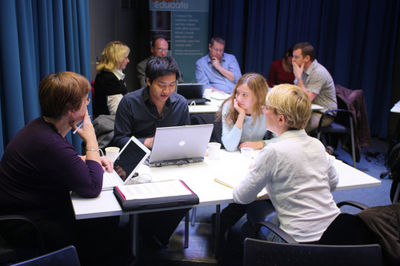
- Balance of Power: does the teacher make all the decisions about learning, or is this shared with students?
- Function of Content: is the teacher's focus primarily on content, or is there an expectation that learners will practise and develop skills in managing knowledge?
- Role of the Teacher: is the teacher's focus primarily on transmission of knowledge, or on facilitating and supporting learning?
- Responsibility for Learning: is the teacher's focus primarily on 'forcing' reluctant learners, or on motivating and encouraging learners?
- Purpose and Process of Assessment: is assessment focused solely on allocating grades, or does it serve to promote and support learning? (Note: Weimer uses the term evaluation where we use the term assessment)
References
Weimer, M. (2002). Learner-centered teaching: five key changes to practice. San Francisco:Jossey-Bass
Additional Resources
For those seeking some extra reading in addition to the core materials:
- Approaches to Study “Deep” and “Surface” - an easy to read site described by the author, James Atherton as a "quick and dirty" overview exploring deep and surface approaches to learning
- Student-centred learning: What does it mean for students and lecturers? An interesting paper that explores the use of the term student-centred learning (SCL) within the education literature. Links in a wide range of literature.
- Learner-Centredness: An Issue of Institutional Policy in the context of Distance Education This paper explores learner-centredness in relation to pedagogy, constructivism, changing roles of teachers and institutional policy.
E-Activity
This activity is part of the summative assessment for the course.
|
Please include the hash tag #LCL2 for this assessment.
|
Summary
In session 2, we have:
- Explored the concepts of deep, surface and strategic learning.
- Explored the concepts of learner-centred learning and teacher-centred learning.
- Analysed the characteristics of learner-centred learning using Weimer's model.
Before you go on to session 3, it's essential that you have:
- Developed a sound understanding of these concepts. If in doubt, go back and review any areas you are unsure of.
- Completed the assessment activity which involves exploring these concepts in terms of your current and future practice.
Session 3: Knowing the learner - cultural orientation
each E-activity provides example of relevant activity/opportunity to encourage deep learning in context of cultural orientation.
Objectives
|
During this learning session you will:
|
Video signpost
Introduction
When designing learning environments it is important that your approach is flexible, equitable and inclusive, accommodating the diverse needs of all students in your class. This helps to give them a good chance at learning successfully. How can you provide inclusive access to learning? An understanding about some of the aspects of diversity is a good place to start. How to use universal design to create inclusive learning opportunities is also important.
|
In this course we will use this small group of learners to illustrate some of the key concepts. From left to right:
|
Cultural diversity
So what do we mean by diversity?
In any society, the population at large is drawn from many backgrounds, and a group of learners reflects this diversity. Diversity can be based on differences in broad groupings such as:
- Cultural background
- Ethnicity
- Language
- Religion and other belief systems
- Socio-economic status
- Gender
- Sexual orientation
- Disability
- Age
Each learner brings a distinctive 'mix' of knowledge, skills, perspectives and values to the learning environment. This mix arises from their own individual characteristics as well as their 'membership' in these groupings.
Cultural Diversity
Although each of the groupings above can be seen as having its own distinct 'culture', the term cultural diversity is commonly used to refer primarily to the first grouping, cultural background.
|
We should avoid making assumptions about the cultural background of learners based on their appearance, language or country of origin. Every cultural grouping incorporates a wide diversity within its members.
|
The implications for teachers
- How we each define and respond to the cultural diversity of our learners depends on the context. For example, a teacher with deaf students in the classroom is likely to find that the students share a common 'deaf culture'. It will be important for this teacher to ensur etha the learning environment recognises this culture and allows room for its expression.
- The culture of a learner influences how they approach their study and respond to the learning environment. To design a learning environment that is optimal for all each learner, it is essential to have an understanding of the factors associated with cultural diversity.
- To create a learning environment that is inclusive, fair and equitable for divers cultures, barriers to learning need to be recognised.
- The cultural identity of the teachers influences what is taught and how it is taught.
- Subject areas, especially those reflecting professional and vocational areas, may have their own distinct 'cultures'.
Additional Resources
For those seeking some extra reading in addition to the core materials:
- Kaminski, J. (2005). Editorial: Nursing Informatics and Nursing Culture. Is there a fit? Online Journal of Nursing Informatics (OJNI), 9, (3) [Online].
- Maurice-Takerei, L. & Jesson, J. (2010). Nailing Down an Identity - The Voices of Six Carpentry Educators. New Zealand Journal of Teachers’ Work,7(2), 156 - 170.
- A report of a research study where six polytechnic carpentry tutors were interviewed about their identity and perceptions of their work as trades educators. The findings "challenge assumptions about what constitutes ‘good teaching’ in a trade related environment" (p. 156).
- Zondiros, Dimitris (2008). Online, distance education and globalisation: Its impact on educational access, inequality and exclusion. The European Journal of Open and Distance Learning (EURODL).
Maori and Pasifika learners
Maori learners
As tangata whenua, the indigenous people, Maori have a special place within New Zealand. As teachers, we are responsible for ensuring that Maori culture is respected and acknowledged within the learning environment.
- Maori pedagogy (Mātauranga Māori) involves working with four aspects or domains of a person’s well being (cognitive - Taha Hinengaro, spiritual - Taha Wairua, physical - Taha Tinana, and family - Taha Whānau). These concepts were originally outlined by Mason Durie (1988) in Te Whare Tapa Whā in relation to health. This model pre-empts the assumption that teachers and tutors should only work within the cognitive domain.
To begin to understand these four domains of well being and four models of learning go to the . Also, read a reflection by
|
Please work through the following:
Other models and concepts you might research include Ako, Tuakana-Teina, and Pōwhiri Poutama.
|
Pasifika learners
These learners are diverse but also have cultural commonalities, however, we should never assume one model fits all. It is important to get to know your Pasifika learners, not just the cognitive aspects but also sociocultural aspects that may affect their learning, so that you can facilitate a sense of belonging and readiness to learn.
References
- Durie, M. (1988). Whaiora: Māori Health Development. Auckland: Oxford University Press
E-Activity
This activity is part of the summative assessment for the course.
|
This activity has two parts: we suggest you create separate blog posts for each part. Please include the hash tag #LCL3 for this assessment. Cultural diversity
Maori and Pasifika learners
|
Summary
In session 3, we have explored:
- The concept of cultural diversity.
- Aspects of Maori and Pasifika cultures which relate to learning.
- Implications for teachers of cultural diversity, especially in relation to Maori and Pasifika cultures.
Before you go on to session 4, it's essential that you have:
- Developed a sound understanding of these concepts. If in doubt, go back and review any areas you are unsure of.
- Completed the assessment activity which involves exploring these concepts in terms of your current and future practice.
Material Sourced from:
Session 4: Knowing the learner - learning preferences and prior learning
focus of e-activity: provide example of relevant activity/opportunity to encourage deep learning in context of learning preferences and prior learning .
Objectives
|
During this learning session you will:
|
Video signpost
Introduction
In the previous session we explored how cultures differ and the implications of this form of diversity for teachers.
In session 4, we will explore how individual learners differ in terms of:
- How they learn best.
- The sorts of prior learning they bring to the learning situation.
Learning Preferences
When it comes to learning, we all have preferences that are influenced by the ways in which we think - our personalities, our backgrounds and our culture. For example, some students may prefer participating in group practical tasks or projects rather than reading long research articles and writing long essays on their own. In an attempt to capture and make sense of some of this, theories and models around learning styles and preferences are explored in this topic.
What are learning styles and preferences?
A learning style can be defined as the way in which an individual generally responds to specific learning situations and prefers to process different forms of information. Learning styles are usually characterised as being based in cognitive differences - that is, differences in the way the brain manages information.
The term learning preferences is often used interchangeably with learning styles. However, preferences are also used in a more general sense than just cognitive functions.
In general, learning styles and preferences help to describe how people learn best, so insights in this area can help both the learner and the teacher. To help learners gain an understanding of how they learn best, it can be effective to guide students to develop skills for metalearning: that is, an awareness of how they learn. This enables them to plan, monitor and evaluate their learning and requires metacognition.
|
Each of our learners has their own preferences for how they learn. For example:
|
A popular model in the New Zealand context is the VARK – guide to learning styles. Neil Fleming has developed a tool to explore learning preferences that considers these in terms of the following modes of learning:
- Visual
- Aural
- Reader/writer.
- Kinaesthetic
Although they may have a preference, for example, to attend lectures rather than study online, students generally utilise a variety of learning styles to enable their learning. From a teaching perspective it is useful to be aware of your students' learning styles and make an effort to cater to a variety of these through using a mix of teaching methods. To do this, it is a good idea to understand your own learning styles first.
|
A. Complete these learning styles inventories and compare them:
|
Are the models valid?
Differing viewpoints about learning styles and preferences are covered in the Introduction to this topic by Don Clark. The existence of learning styles and preferences in acknowledged in the literature, but the best way to measure them is still under discussion.
Also, researchers have suggested that learning styles are far more important when we are deciding what strategies and media to use to teach particular content. For example, David Merrill (2000) believes that the design of instructional strategies based on learning styles, should be influenced by the type of content or the goals of the interactions that the teacher intends the learners to have with the content or with others such as learners and teachers.
|
You might like to also explore some other models of learning styles and preferences: Extra resources:
|
References
- Merrill, D. (2000). Instructional Strategies and Learning Styles: Which takes Precedence? Trends and Issues in Instructional Technology, R. Reiser and J. Dempsey (Eds.). Prentice Hall.
Prior learning
Prior Learning is the set of skills and knowledge that a learner bring to the learning situation. Prior learning arises from previous life activities, work experience, volunteer experience, personal study or formal education.
It is important to acknowledge prior learning because:
- If students are given the opportunity to demonstrate what they already know and understand they are more likely to become engaged in the classroom activities.
- According to constructivist theory, learners construct knowledge based on their existing knowledge.
- Learners need prior skills to be able to engage in study at tertiary level.
At the course or programme level, a RPL (Recognition of Prior Learning) process may be appropriate, where a student is given credit for either the entire course or programme or some of the assessments in the course. In this situation, previous learning is measured against the learning outcomes of an existing course or programme, and this usually occurs through a specifically designed assessment process.
|
E-Activity
This activity is part of the summative assessment for the course.
|
This activity has two parts: we suggest you create separate blog posts for each part. Please include the hash tag #LCL4 for this assessment. Learning preferences
Prior learning
|
Summary
In this session, we have explored:
- The concept of learning styles and preferences, including:
- A range of models for analysing an individual's learning styles.
- Arguments for and against the validity of learning styles.
- How we might incorporate teaching strategies to meet the diverse learning preferences of learners.
- The concept of prior learning, including how we might incorporate teaching strategies to acknowledge and build on prior learning.
Before you go on to session 5, it's essential that you have:
- Developed a sound understanding of these concepts. If in doubt, go back and review any areas you are unsure of.
- Completed the assessment activity which involves exploring these concepts in terms of your current and future practice.
Material Sourced from:
Session 5: Knowing the learner - numeracy, literacy and digital skills
focus of e-activity: provide example of relevant activity/opportunity to encourage deep learning in context of numeracy, literacy and digital skills .
Objectives
|
During this learning session you will:
|
Video signpost
Introduction
In earlier times, the term literacy was used to refer to the ability to read and write. Now, the concept has been extended to include:
- The other main language modes of speaking and listening.
- The concept that literacy is not an all or nothing attribute. Everyone has a literacy profile - a unique mix of literacy skills at various levels.
- The concept of functional literacy - that is, that literacy skills exist in relation to the literacy demands of what we are trying to achieve.
In our information-rich world, we all need certain specific literacy skills to play a full part in society and function effectively in our work and study context.
Note: The term literacy is often used to include language literacy, numeracy and digital or information literacy.
Literacy and numeracy needs
Students enter tertiary study with variable skills in reading, writing, speaking, listening and numeracy skills. If they do not have strong skills in these areas, this can impact on their success when studying and in transitioning smoothly to further study or employment. Even students who have good literacy and numeracy skills may never have had to read or write the type of material, or had to do the particular calculations that your course requires.
|
Consider again our group of learners:
As well as specific knowledge they bring from their prior learning (such as knowledge of business procedures and concepts), they have also developed transferable skills they can apply to their study and work. For example:
|
|
|
Digital Literacy Skills
There are a range of key digital literacy skills that are quite broad and generic that apply to the appropriate use of digital technology and communication tools.
- find / locate / access information and resources
- read and interpret information
- analyze / evaluate information and resources
- manage information and resources
- integrate information and digital tools
- construct new knowledge
- create new resources
- share / communicate effectively via digital means
The ability to use these skills can then be applied to a wide variety of digital tools and information which may include but is certainly not limited to the following:
- Computer health and safety
- Computer basics:
- File management
- Word processing
- Spreadsheets
- Using email
- Intranet skills
- Internet search skills
- Information search skills – library and other data bases
- Use of photocopier/printer/scanners
- Student management systems eg. EBS4
- Learning management systems eg. Moodle
- Corporate Software, used specifically by your own institution eg, systems for accessing pay and leave data
- Teaching tools:
- Use of presentation tools eg. PowerPoint, Keynote, Prezzi
- Audio/visual resources (creating and editing audio and video resources)
- Web 2.0 tools
- Social media
- Communication tools eg, Adobe Connect, Skype, video conferencing
- Classroom tools, eg. Data projectors, Smartboards
- Discipline specific tools eg, CAD, Photoshop, Simulation suites
- Mobile learning, use of tablets and cell phones
Note that this list nicely reflects the concept of functional literacy: the digital skills needed by a teacher may be different from those required by a learner.
|
Choose one self-assessment tool and assess your digital literacy relevant to that tool. Reflect on what you learnt or discovered from this.
|
Meeting learner needs
One effective strategy for meeting the needs of learners is to start by assessing their existing literacy and numeracy skills. This will allow the teacher to:
- Plan additional support for individual learners.
- Develop additional materials or activities to build literacy and numeracy.
- Modify or develop learning materials which are better suited to existing skills.
- Embed appropriate literacy development into the course.
Trying to meet learner needs without such assessment means and support or development is likely to be unfocused and less effective.
There are a variety of approaches and tools for assessing learners early in the programme:
- 1:1 interviews
- Observing how students cope with contextualised literacy and numeracy tasks and assessments
- Using the Literacy and Numeracy for Adults Assessment Tool
- Conducting focus or discussion groups
Getting to know your students' literacy and numeracy skills is part of a wider process of identifying students' needs and factors for success. An Ako Aotearoa project at Weltec illustrates this. Profiling your student
The main purpose of initial literacy and numeracy assessment should be to support learning
|
Using the Assessment Tool at Otago Polytechnic
All students on certificate level programmes at Otago Polytechnic (and other tertiary institutions in New Zealand) are required to use at least one of the Literacy and Numeracy for Adults Assessment Tools. If you are not familiar with the Assessment Tool, work through the background information for Educators here. This gives detailed information about how to set up assessments and analyse reports.
- Profiles of students at steps of Reading Progression Shows what students can typically do in terms of reading, and relates this to the 'step' they were assessed at by the Reading Assessment Tool.
- Student profiles at steps of Numeracy Progressions Shows what students can typically do in terms of numeracy, and relates this to the 'step' they were assessed at by the Numeracy Assessment Tool.
|
Assessment should follow good practice principles. What does this involve?
|
Examples of contextualised tasks to gather evidence about your students' literacy and numeracy skills, early in the programme
- Reading activity/formative assessment task used on the Basic Mechanical Engineering Trades Skills (BMETS) programme. The assessment required students to find their way around a course theory booklet on safe welding. Students had to use skimming and scanning skills to locate the relevant information to answer the questions. This activity was used at the beginning of the programme. It gave students a reality check too - that reading was an important skill they would need on the programme. The activity was followed up with a class debrief in which the lecturer went over the correct answers and how to locate these in the text reading assessment task.
- Writing activity to get a snapshot of students' skills
|
These resources contain some other suggestions for getting to know learners
|
E-Activity
This activity is part of the summative assessment for the course.
|
This activity has two parts: we suggest you create separate blog posts for each part. Please include the hash tag #LCL5 for this assessment. Literacy needs
Literacy development
|
Summary
In this session, we have explored:
- The concept of functional literacy, numeracy and digital skills.
- Approaches and tools for assessing learner literacy skills and needs.
Before you go on, it's essential that you have:
- Developed a sound understanding of these concepts. If in doubt, go back and review any areas you are unsure of.
- Completed the assessment activity which involves exploring these concepts in terms of your current and future practice.
